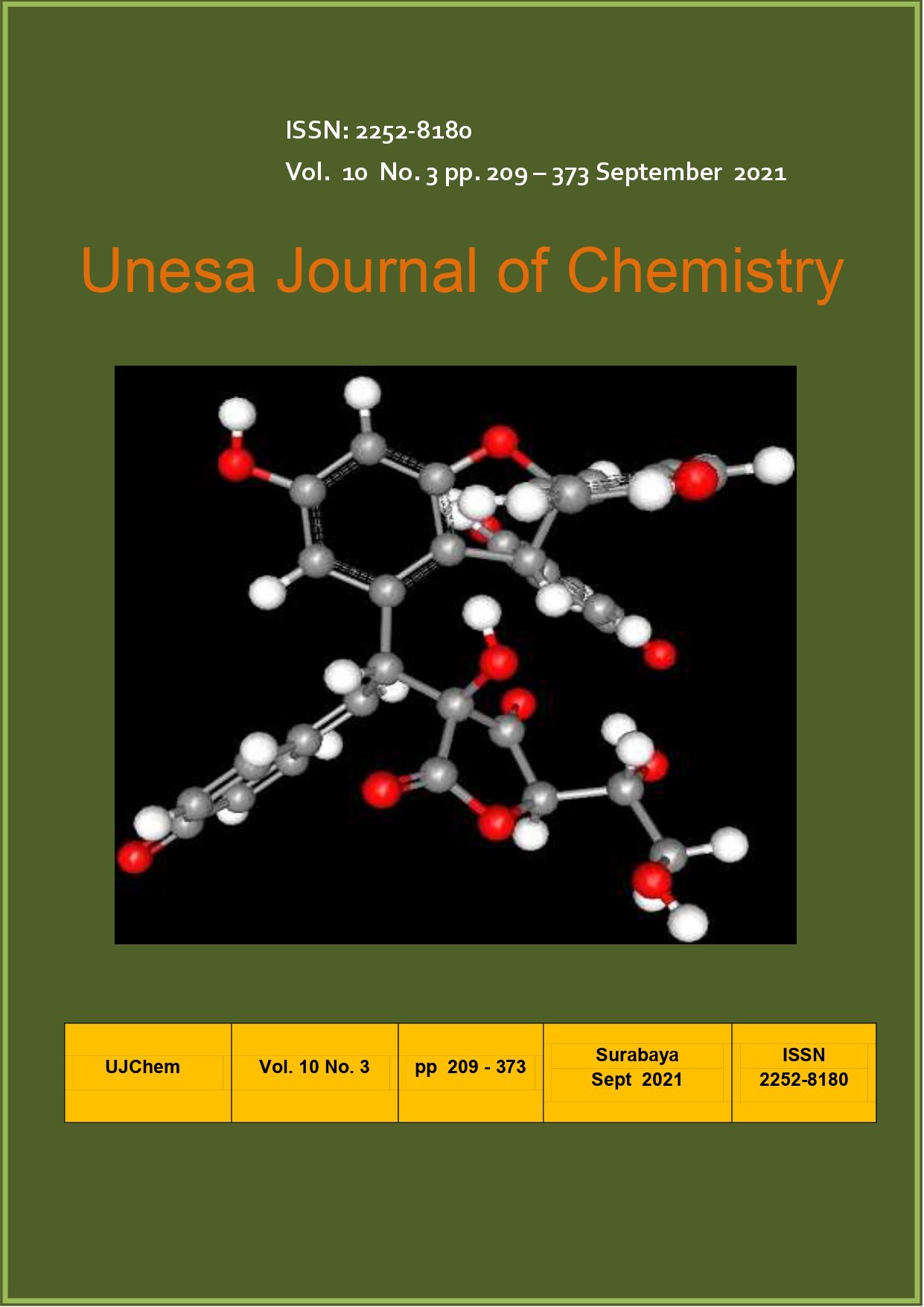PENGARUH SUHU PADA SINTESIS MOLECULARLY IMPRINTED POLYMER (MIP) TERHADAP KEMAMPUAN ADSORPSI KLORAMFENIKOL EFFECT OF TEMPERATURE ON THE SYNTHSIS OF MOLECULARLY IMPRINTED POLYMER (MIP) ON ADSORPTION CAPABILITY OF CLORAMPHENICHOL
Main Article Content
Abstract
The purpose of this research was to determine the effect of temperature on the synthesis of Molecularly Imprinted Polymer (MIP) on the adsorption capability of cloramphenicol and for analyze the functional groups of the best polymers that were analyzed using Fourier Transform Infrared (FTIR) instrument. In this research, MIP has been made with variations in temperature of 60oC, 70oC, and 80oC using the precipitation method with chloramphenicol (CAP) as the template, ethyleneglycol dimethacrylate (EDGMA) as a crosslinker, methacrylic acid (MAA) as a monomer, acetonitrile as a porogen, and benzoyl peroxide (BPO) as a initiator. The ratio of CAP: MAA: EDGMA is 1: 3: 18 with 30 mL of porogen acetonitrile. The results showed that the temperature of 80oC resulted in the best Q adsorption of 4.286 mg/g with an Imprinting Factor (IF) value of 5.977 and percent of extraction of 96.66%. FTIR characterization showed that in Non-Imprinted Polymer (NIP) there was absorption of -NO2 functional groups at wave number 1521.77 cm-1, while in MIP and blank polymer (PB) there was no absorption of -NO2 groups.
Key words: Molecularly Imprinted Polymer, chloramphenicol, precipitation method, temperature

